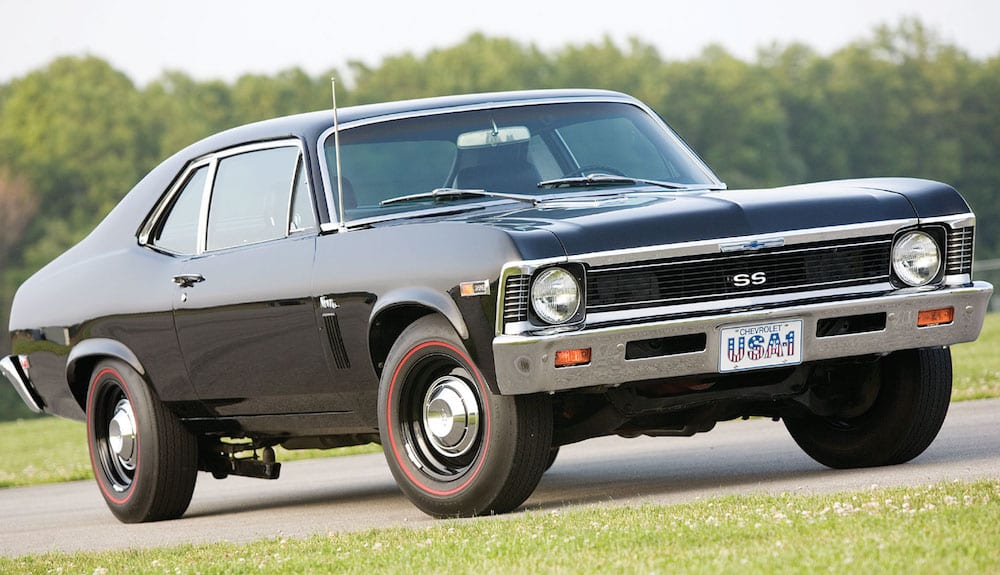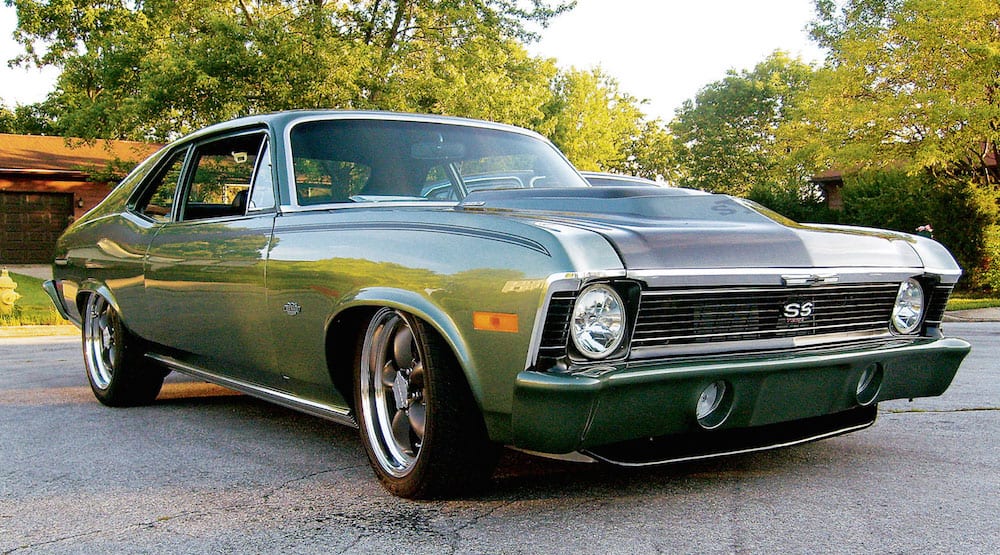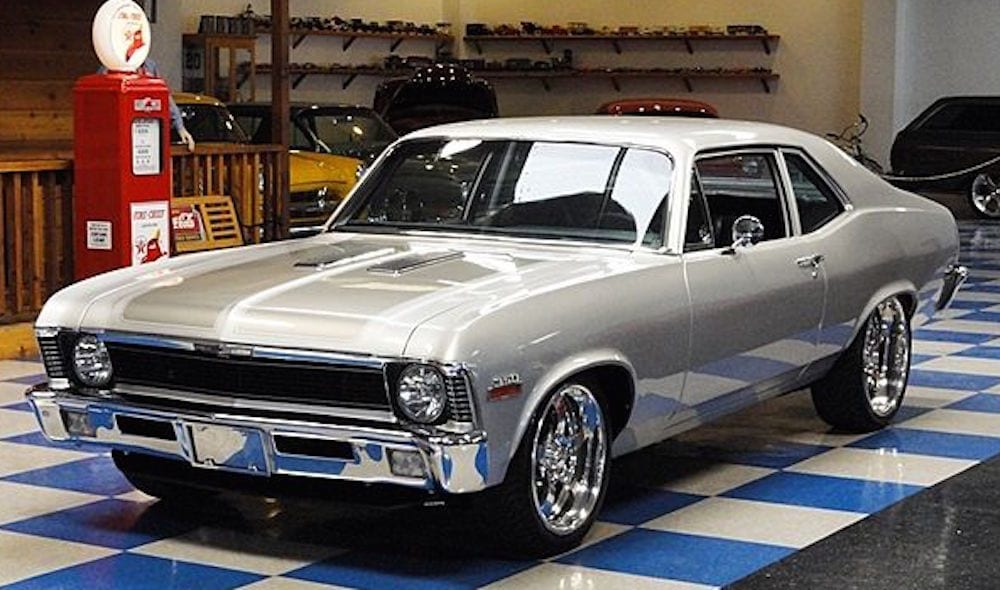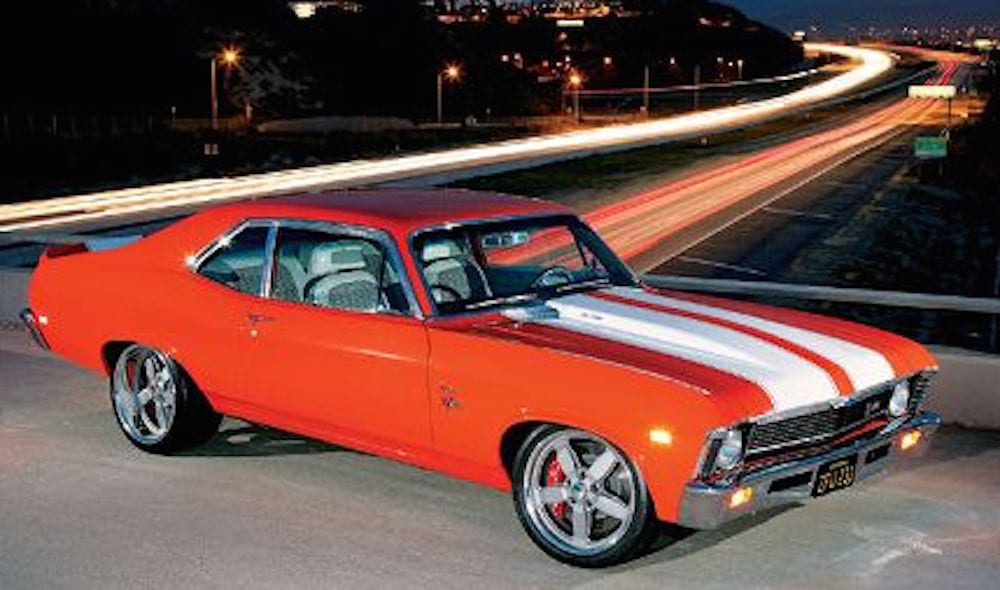Every now and again we like to look back at some of Chevy’s more memorable and beloved vehicles. We know that the brand has continually produced some of the most highly-regarded vehicles out there, so it’s basically assumed that all of their products are impressive. However, some of these models have been lost to time, and we try our best to bring these vehicles back from the grave and give them the recognition they deserve.
Today, we’re going to look at the Chevy Nova (or Chevy II), a compact automobile that was available from 1962 through 1988. If you’ve been considering a trip to Chevrolet dealerships, see why you should be keeping your eyes open for this car…
In the 1960s, the executives at Chevy wanted a basic car, and they wanted it on dealership lots as soon as possible. Designer Clare MacKichan recalled that “there was no time for experimentation or doodling around with new ideas.” That pressure to get a vehicle designed and produced resulted in one of the fastest car-development processes in history, as 18 months after it was approved, the first Chevy Novas began rolling off the assembly line. Perhaps the longest part of the process was determining the name. The brand eventually named the vehicle “Chevy II,” since the much-preferred “Nova” name didn’t start with the letter C (an apparent desire of the brand and engineers).
The vehicle wasn’t intended to be flashy. Chevy simply wanted to offer their customers a basic, simple ride, and that was it. To help expedite the entire process, the designers relied on the popular Ford Falcon for a basis. The original Chevy II had a wheelbase that was only half an inch longer than the competitor, and similar to the Falcon, the nameplate offered a variety of model options (like a sedan, wagon, two-door hardtop, and convertible). While it’s curious that the brand never produced a sedan delivery or coupe utility version, many attribute the omittance to the fact that the company was trying to avoid competition with their own El Camino. The vehicle was also available in a trio of series: the 100 Series, 300 Series and Nova 400 Series.
The original Chevy II offered a pair of engines, including the 2.5-liter inline-four and the 3.2-liter straight-six engine. Following the release of the Chevelle in 1964, sales began to drop for the Chevy II. As a result, the V8 engines were eventually added to the line, including the fuel-injected version typically found in the Chevy Corvette. Updates through the vehicle’s first four years on the market included a restyled exterior design, a revamped dashboard, and the inclusion of bucket seats.
With sales still slacking, the brand unveiled the second generation Chevy II in 1966. The vehicle featured a more squared design, and engineers also included an eye-catching grille and a fastback roofline. Similar to the previous generation, customers had a choice of engines: a 3.18-liter inline-six, a 3.8-liter inline-six, a 4.64-liter V8 (with 195 to 220 horsepower), a 5.36-liter V8 (275 horsepower), and the new Turbo-Fire 5.36-liter V8 (350 horsepower). When coupled with the four-speed manual transmission, the vehicle ended up slowly transforming into a muscle car.
Once again, Chevy’s car was outshined by another one of the brand’s new vehicles: the Camaro, which was first introduced in 1967. After having stuck with the second generation for only two years, the third generation made its debut in 1968. The vehicle was completely redesigned, featuring a longer wheelbase and a new subframe (which separated the powertrain and front suspension up front). The station wagon and hardtop sport coupe were ditched, as was the 2.51-liter four-cylinder engine. Still, the brand advertised that there were 15 different powertrain options, and there were still a handful of engines to choose from (a 4.1-liter six-cylinder, the 5.03-liter V8, and the 275-horsepower 5.36-liter engine). The new generation of the Chevy II also included new power brakes and steering, an adaptive air conditioning unit, and restyled head restraints.
Of course, the most significant change during the third generation may have come in the second year. After sales of the car continued to fall in 1968, Chevy dropped the “Chevy II” name in favor of the more simple (and memorable) “Nova.” The nameplate was previously used as the name for the Chevy II’s special edition packages, like the Chevy II Super Sport. Many of these vehicles included several aesthetic changes that gave the car a more sporty, racing feel, and the mechanics (including the engine) were often manipulated. On the standard versions of the new car, customers would notice the inclusion of the “Nova by Chevrolet” badge… and the subsequent retirement of the “Chevy II” badge.
With the Nova now taking over, the engineers once again revamped the mechanics. A new simulated air extractor was added, and the brand also revamped a pair of their engine offerings (the 5.7-liter V8 saw an increase to 300 horsepower, while the 5.7-liter V8 delivered 255 horsepower). A new Turbo-Hydramatic 350 three-speed automatic was available for six-cylinder and V8 engines.
The vehicle was an instant hit, selling 254,242 units in 1980. The Nova gained some mainstream popularity when it was chosen to compete in the Trans-Am racing circuit. General Motors eventually caught on to the growing demand for the vehicle, and all of the company’s entry-level vehicles soon began carrying the ‘Nova’ name (including the Pontiac Ventura II, the Oldsmobile Omega, and the Buick Apollo). Ironically, the first letter of each of these models ended up spelling out Nova (Nova, Omega, Ventura, Apollo). Probably unintentional, but still pretty cool!
The Nova didn’t see a whole lot of changes over the next few years, but sales continued to grow. In 1972, the nameplate sold a personal-high of 349,769 units. The third generation lasted until 1974, when (believe it or not) the fourth generation was introduced. While the original Novas focused on simplicity and powerful engines, the brand was now focused on producing a stylish and luxurious vehicle. The nameplate still retained many of the attributes that made the previous generation so successful, while also revamping the vehicle where necessary (like the inclusion of a new stabilizer bar, new windows and vents, and an enlarged speedometer). There were six different engine options (including a trio of V8s) and six different transmissions available during the fourth generation.
Meanwhile, the Luxury Nova inserted the nameplate into the luxury market. Referred to as “the most luxurious compact in Chevrolet’s history,” the vehicle featured reclining seats, sound insulation, and an electric clock.
Unfortunately, sales again declined, and the brand eventually decided to retire the Nova. By 1980, the vehicle has been replaced in Chevy’s lineup by the Citation. Luckily, the vehicle made a return in 1985, but it really proved to be the beginning of the end for the nameplate. The fifth generation Nova was essentially a rebadged and restyled Toyota Sprinter, and the engineers borrowed the Corolla’s 1.6-liter four-cylinder engine. The Nova was eventually shifted to Chevy’s Geo division, which led to another name change: the Chevy Prizm. That name didn’t last long, as the vehicle’s production ended in 1988.
The Chevy Nova can still be found on plenty of used car lots, although it is relatively rare. You should be able to find a 40-year-old model for just south of $30,000. Sure, this may be a pricey investment, especially for a vehicle that’s more than four decades old. However, as you’ve read above, the vehicle’s rich history (as well as impressive engines, style, and interior features) justifies the high price.






